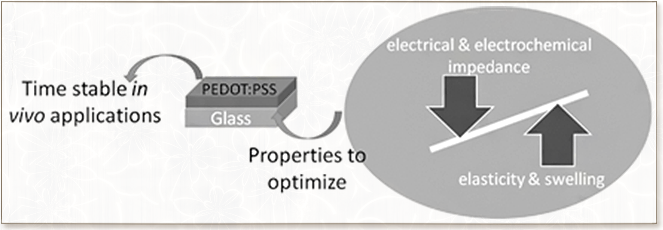
The effect of 3-glycidoxypropyltrimethoxysilane (GOPS) content in poly(3,4-ethylenedioxythiophene):polystyrene sulfonate (PEDOT:PSS) dispersions on the properties of films spun cast from these formulations is investigated. It has been found out that the concentration of GOPS has a tremendous, yet gradual impact on the electrical, electrochemical, and mechanical properties of the PEDOT:PSS/GOPS films and that there is an optimum concentration which maximizes a particular feature of the film such as its water uptake or elasticity. The benefits of aqueous stability and mechanical strength with GOPS are to be compensated by an increase in the electrochemical impedance. GOPS aids obtaining excellent mechanical integrity in aqueous media with still highly conducting properties. Moreover, active devices like organic electrochemical transistors that contain 1 wt% GOPS, which is a concentration that leads to film with high electrical conductivity with sufficient mechanical stability and softness, exhibit steady performance over three weeks. These results suggest that variations in the concentration of such an additive like GOPS can enable a facile co-optimization of electrical and mechanical properties of a conducting polymer film for in vivo bioelectronics application. (Figure presented.).
DOI: 10.1002/mame.201600497